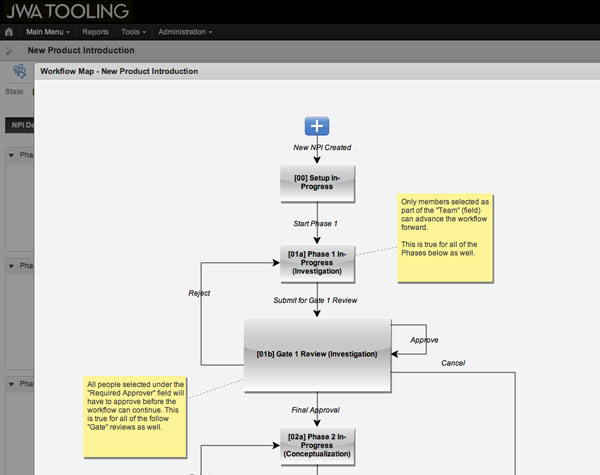This week I visited JWA tooling, a company close to my heart, and one of our Autodesk PLM 360 customers. Prior to Autodesk, I spent 20 years working in the manufacturing and construction industries so to visit one of our true UK manufactures and long-time Autodesk Inventor users was great. Talking about apprenticeships, tools, shadow graphs and topless calendars…I could go on for hours! They have been around since 1985 and are a truly innovative company and manufacturing institution. They specialise in design and manufacture of special purpose ECM machines and tooling. Their CNC machines run 7 days a week and as you walk around the shop floor the sounds and smell of coolant let you know you are in a company that designs and manufactures products that really improve the way we do things.
So I caught up with John and Pete Wood, owners of JWA tooling, to find out more and to learn how they’re using Autodesk PLM 360.
 |
| John Wood - As quoted by all the staff at JWA, “The Brains” of the organisation! |
 |
| Pete Wood - Will be using Autodesk PLM360 to capture and share all of 'The Brains' knowledge with all of the staff at JWA Tooling. |
Mike: So, morning guys, great pleasure to meet you. We have chewed the fat enough about the old days, so tell me more about JWA Tooling.
Pete: JWA Tooling is a family business established in 1985 from the loft of MD John Wood, and specialises in the manufacture and development of EDM /ECM tooling and machinery and subcontract manufactures for emerging technologies in the alternative energy industry. Historically, we have worked on mission critical aerospace, automotive and military projects.
 |
| Capturing the detailed product knowledge in Autodesk PLM 360 will allow new starters and existing staff to innovate faster and work on any of the products that JWA produces |
John: The nature of our business gives us the opportunity to manufacture a vast array of products which are high in complexity yet small in quantity. They are typically produced by CNC milling, turning and wire EDM (electrical discharge machining) methods and many of the components we produce are used as tooling for producing air film cooling holes on jet engine blades. We also manufacture components for hydrogen fuel cell engines and equipment for producing stress free internal features on a range of advanced diesel fuel system components.
Mike: Why do you need PLM?
 |
| Using PLM360 via mobile tablet (ipad, android etc) to make sharing the data to the shop floor easy and accessible |
 |
| Using the quality apps 'Out of the Cloud' powered by Autodesk PLM 360, JWA Tooling is able to keep track of inspection tools and machines. |
 |
| Using the new product introduction app powered by PLM360, JWA Tooling is able to capture every detail of the design process, from design intent, material selection and assembly processes. |
Pete: We were lucky enough to get to work with Autodesk to develop an app to capture all of the information we needed to store regarding job knowledge. Once we had that in place we started to think in depth about the work we do and how we achieve certain tasks and as jobs popped up we recorded the methods we used ready for the next guy to pick up in the future. The great thing about Autodesk PLM 360 is that we’re able pull together existing set up sheets, etc. and throw in additional images, video links to web resources, plus add notes about techniques used with 8500 products or so in our catalogue. For us, PLM is going to be work in progress for some time but it’s totally worth it.
 |
| Once of the many CNC machines in action |
Mike: So How's it going?
Pete: Really well actually. Like all of the Autodesk products used here, we found PLM 360 really intuitive while creating customised data logs and accessing the info is really easy. Showing people how to use it and access what they need has been easily achievable too.
Mike: Ok. What’s next?
 |
| The vision is to give every CNC machine operator direct access to PLM360 on every machine station |
Thanks guys and catch up soon to see how your doing..
Thanks for reading, Mike

No comments:
Post a Comment